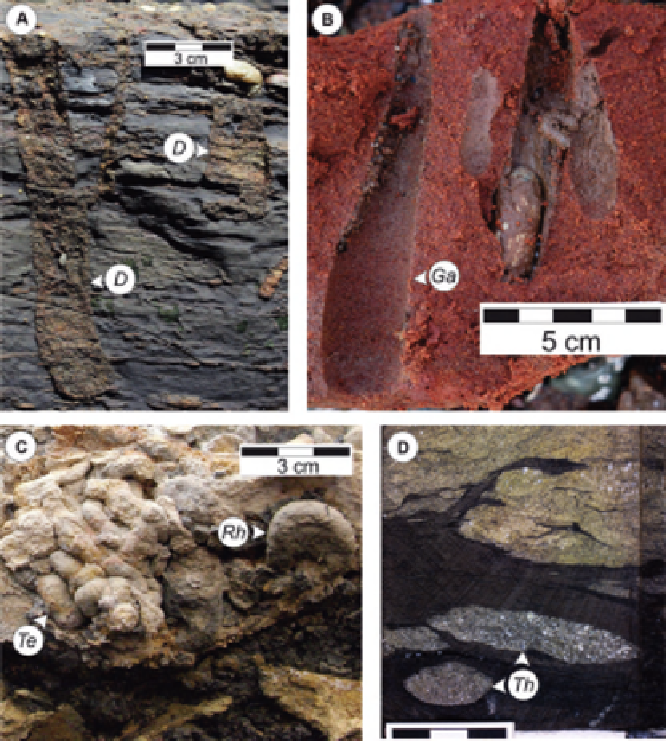Environmental Engineering Reference
In-Depth Information
FIGURE 6
Trace fossils and trace-fossil suites attributable to the substrate-controlled ichnofacies.
(A) Firmground
Diplocraterion
(
D
) of the
Glossifungites
Ichnofacies. (B) The present-day boring
Gastrochaenolites
(
Ga
) of the
Trypanites
Ichnofacies. (C) and (D) Woodground borings
Teredolites
(
Te
),
Rhizocorallium
(
Rh
), and
Thalassinoides
(
Th
) of the
Teredolites
Ichnofacies. Scale in D is
3 cm long.
Coprinisphaera
Ichnofacies for permanently subaerially exposed semiarid
paleosols in terrestrial settings associated with savannahs, grasslands, prairies,
and steppes (
Fig. 7D
); the
Termitichnus
Ichnofacies for warm, humid paleosols
associated with closed forests; the
Celliforma
Ichnofacies for arid, carbonate-
rich paleosols in scrubs, woodlands, and palustrine environments; and the
Octopodichnus
-
Entradichnus
Ichnofacies for eolian settings. For more
detailed characterization of the individual Seilacherian ichnofacies, the reader
is referred to
MacEachern et al. (2007a,b, 2010)
,
MacEachern andBann (2008)
,
and
Buatois and M´ngano (2011)
.










Search WWH ::

Custom Search